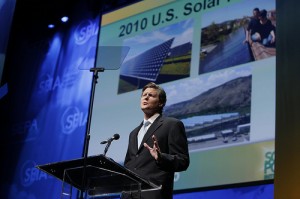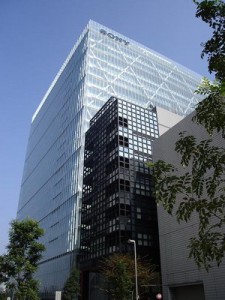 Rhone Resch, president and CEO of the Solar Energy Industries Association (SEIA) released the following statement today commending President Barack Obama’s FY2012 budget request: “A few weeks ago, President Obama laid out a vision to keep America competitive in a rapidly evolving global marketplace. The Administration’s budget delivers on that vision, helping to lay the groundwork for a level playing field that allows solar energy to compete with traditional fossil energy sources that have received substantial support from the federal government for decade after decade.
Rhone Resch, president and CEO of the Solar Energy Industries Association (SEIA) released the following statement today commending President Barack Obama’s FY2012 budget request: “A few weeks ago, President Obama laid out a vision to keep America competitive in a rapidly evolving global marketplace. The Administration’s budget delivers on that vision, helping to lay the groundwork for a level playing field that allows solar energy to compete with traditional fossil energy sources that have received substantial support from the federal government for decade after decade.
“This budget is a smart investment for the American taxpayer. If this budget is enacted, I expect the solar industry to more than double in 2012, creating tens of thousands of good-paying solar energy jobs. And as the industry grows, our costs continue to decline helping to make solar the best economic choice for taxpayers across the country.
“The President’s budget makes a targeted investment in the Department of Energy Loan Guarantee Program, adding $200 million to spur development of utility-scale solar and solar manufacturing facilities.
“The budget also extends the highly successful 1603 Treasury Program for one year. This program has been critical for solar power development, both large and small, while the financial markets have been slow to recover. After securing a hard-fought extension through 2011 during the lame duck session, we are pleased to see that the program remains a top priority for the President.
“Finally, the Administration’s budget includes smart investments in clean energy research – including a near doubling of solar energy technology funding – that will go a long way in achieving the new Sputnik moment President Obama envisioned in his State of the Union Address. “We applaud this bold investment in America’s future and urge Congress to swiftly pass this budget and keep solar working for America.”








